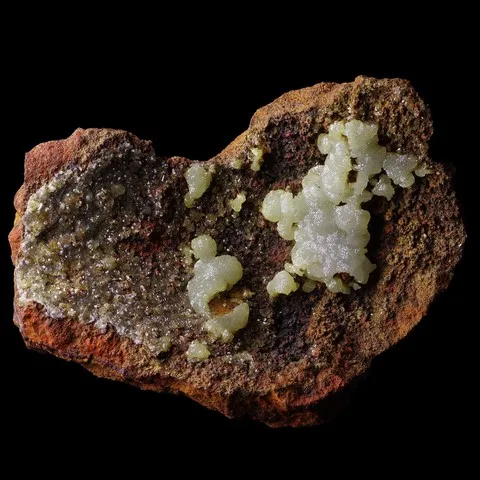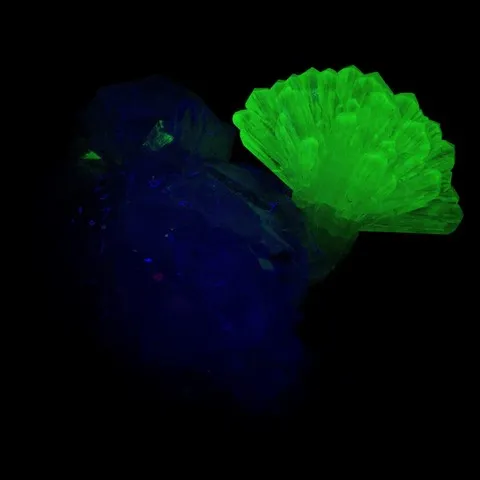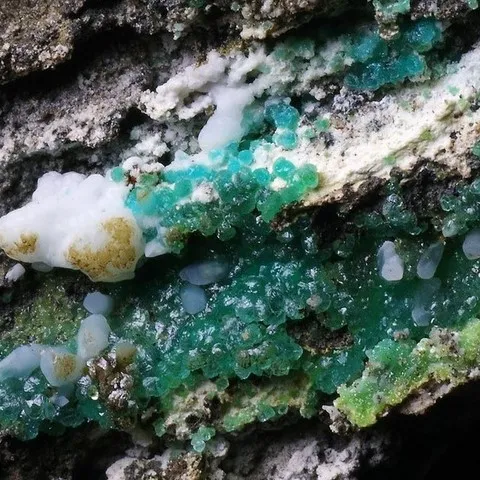ADAMITE
Class : Phosphates, arsenates, vanadates
Subclass : Anhydrous arsenates
Crystal System : Orthorhombic
Chemistry : Zn2(AsO4)(OH)
Rarity : Quite common
Adamite is a common arsenate from the oxidation zones of arsenic-rich and zinc deposits. It is currently associated with olivenite, malachite, smithsonite, and other secondary minerals of zinc or copper. The substitution of zinc by copper generate a complete series with olivenite. It owes its name to the French mineralogist Gilbert-Joseph Adam who discovered this species in the Chañarcillo mine in Chile. Adamite occurs in fibroradiated aggregates or balls with hummocky surfaces bristling with crystalline terminations, but also in elongated prismatic crystals. Its color varies, most often yellow to yellow-brown or pale blue to green, it can become intense green if it contains copper (cuprian-adamite) or pink to purple if it contains cobalt (cobaltoan-adamite) or manganese (manganoan-adamite). Adamite is not used, the samples are only for the collection, note that some gemmy crystals had been cut for the collection.
Mexican adamite fan fluorescent under UV light
Adamite in the World
Adamite in France
In France millimetric crystals of cuprous and cobaltiferous varieties have been reported in the Cap Garonne mine in the Var department, but also Chessy (Rhône) or Echassières (Allier).
Twinning
The adamite seems to be able to present twins but the smallness of the crystals makes them difficult to observe. No data could be found in the literature on the subject.
Fakes and treatments
No fakes or treatments known for this mineral.
Hardness : 3,5
Density : 4,32 to 4,48
Fracture : Conchoidal to uneven
Trace : White
TP : Translucent to transparent
RI : 1,708 to 1,773
Birefringence : 0,055
Optical character : Biaxial (+/-)
Pleochroism : Weak
Fluorescence : Yellow to green
Solubility : Acids
Magnetism : None
Radioactivity : None





